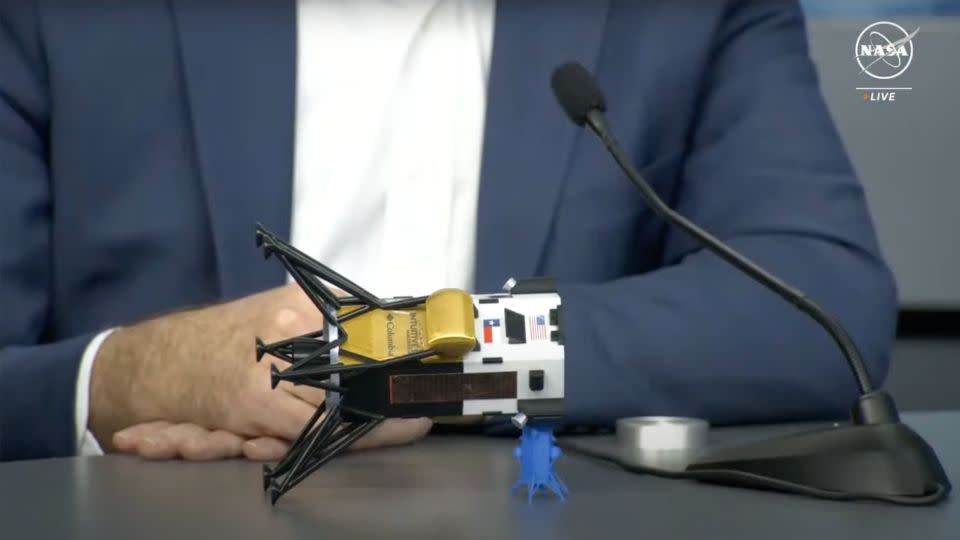The Odysseus lunar lander is sideways on the moon, Intuitive Machines, the company that built the vehicle, said during a news conference Friday.
The revelation comes after Intuitive Machines had initially described Odysseus as “upright” in an update posted to the social media platform X just after the historic mission made its touchdown on the lunar surface Thursday. But the company’s CEO, Steve Altemus, said data later showed that the spacecraft was likely tilted on its side after having caught one of its feet on a lunar rock.


“We think it came down (moving) about 6 miles an hour this way, and about 2 miles an hour (horizontally along the surface) and caught foot in the surface, and in the lander has tipped like this,” Altemus said, using a small model of the lander to demonstrate the suspected issue during a news briefing.
Altemus said only one piece of Odysseus’ cargo is on the side of the spacecraft that’s facing down toward the lunar surface: A piece of art that was sent to the moon by one of Intuitive Machines’ commercial customers.
The CEO also emphasized that the spacecraft remained in stable condition, with its solar panels catching sunlight and fully charging its batteries. Already, some experimental technology payloads from NASA have been put to the test, checking off some key mission objectives.
‘A punch in the stomach’
Notably, Intuitive Machines realized prior to descent that Odysseus had a faulty piece of navigation equipment. And the company opted to bypass the broken pieces and use an experimental NASA instrument that happened to be on board: The Navigation Doppler Radar, or NDL, developed at NASA’s Langley Research Center.
Altemus said initially learning of the issue was “like a punch in the stomach — that we were going to lose the mission.”
The company’s engineers had to essentially operate as hackers, figuring out a way to patch in data from NASA’s NDL — which was intended to be on a simple demo flight — in the hopes it could save the mission.
The hack ultimately worked, and the spacecraft made it to the lunar surface in operational condition. No other US spacecraft has soft-landed on the moon since the Apollo 17 mission in 1972, and no commercial spacecraft before Odysseus had ever accomplished such a feat.
The space agency and Intuitive Machines are still working to figure out whether Odysseus can achieve all of its science objectives, according to Joel Kearns, the deputy associate administrator for exploration in NASA’s Science Mission Directorate.
“We are doing an assessment to see: Are there any measurements still to come from any of the NASA supplied payloads that most likely can’t take place particularly because of this new orientation?” Kearns said.
The spacecraft is experiencing some issues — which Intuitive Machines executives said were close to being resolved — that involve the speed and consistency with which they can gather data from Odysseus.
For more CNN news and newsletters create an account at CNN.com
